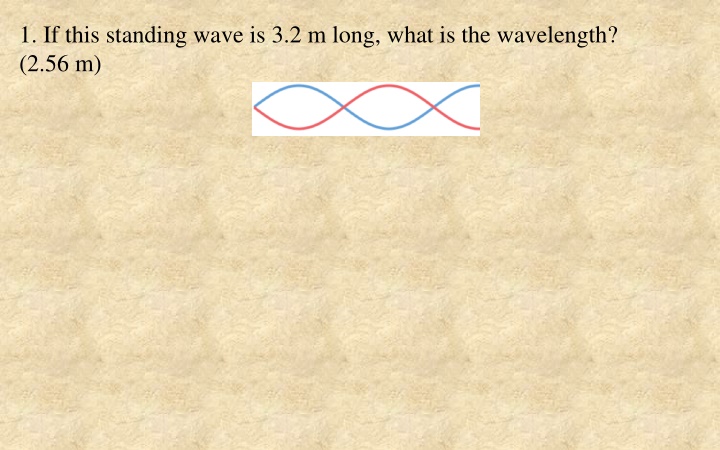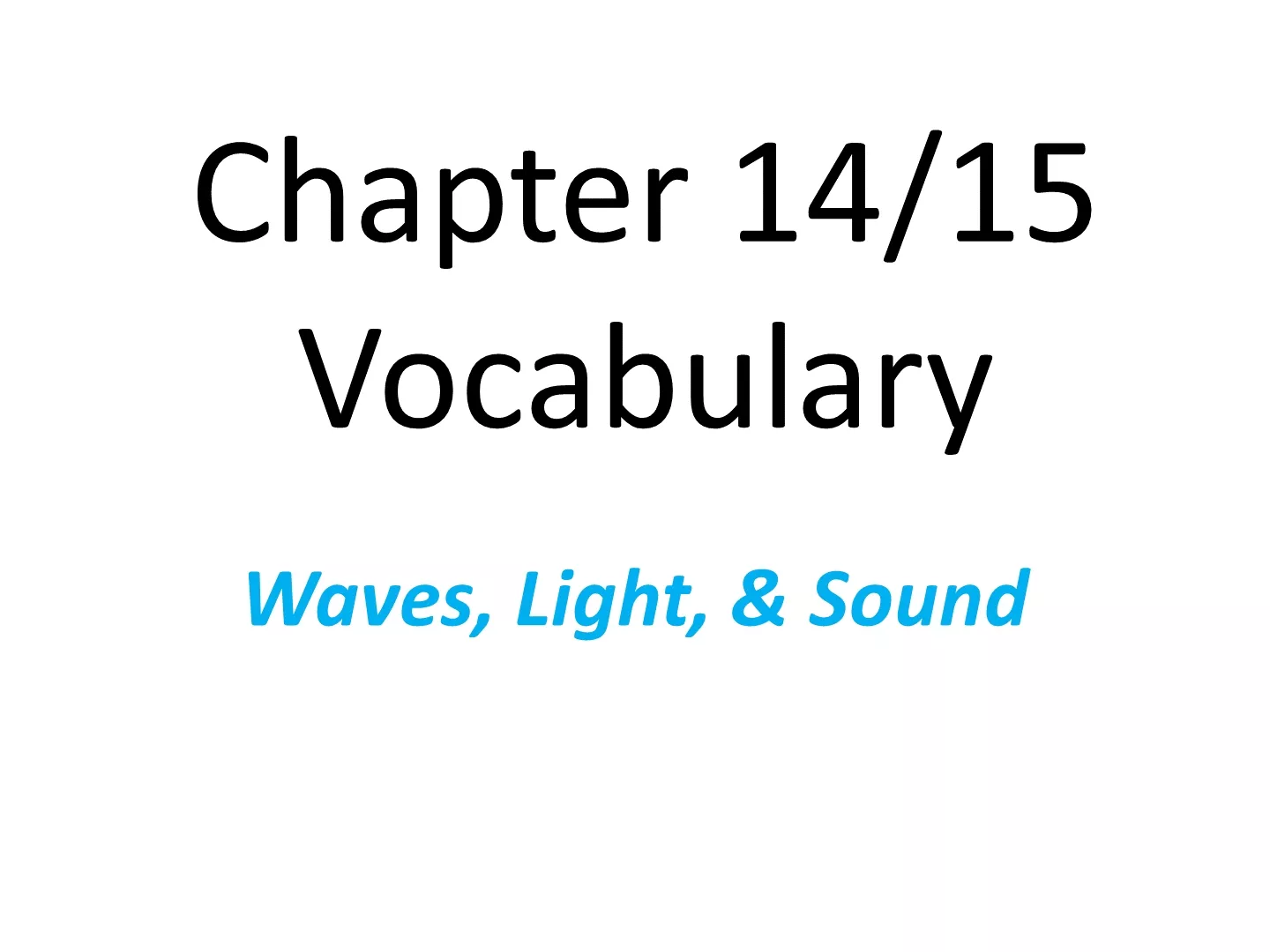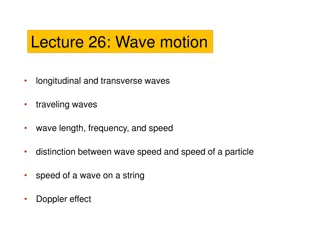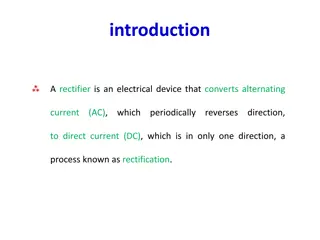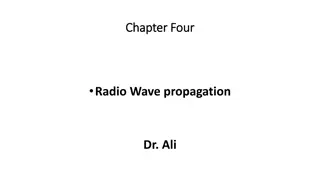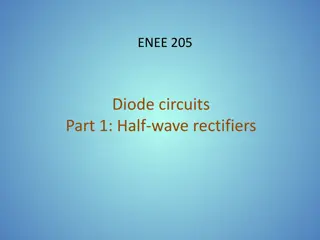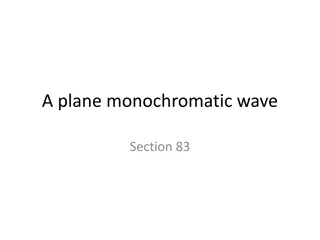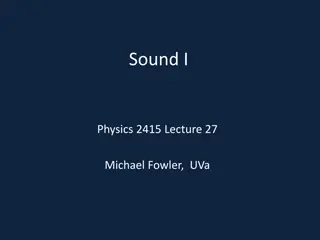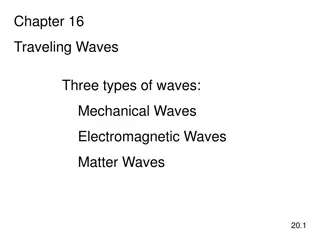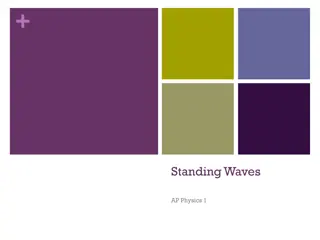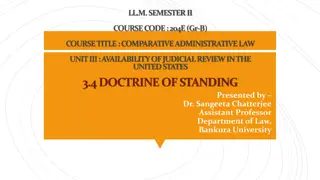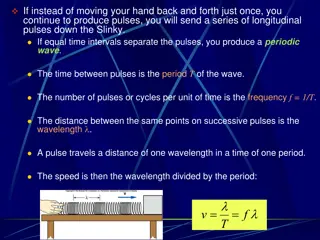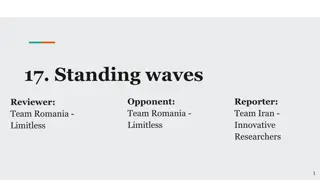Standing Wave Examples and Calculations
In this content, various examples of standing waves are explored, including calculations of wavelength, frequency, wave speed, and wave length. The scenarios range from determining the wavelength of a given standing wave to finding the frequency of different modes of vibration in open or closed pipes. Additional examples cover tuning a violin string and designing an organ pipe for specific frequencies based on the speed of sound. These practical exercises help understand the principles of standing waves and their applications in physics.
Download Presentation

Please find below an Image/Link to download the presentation.
The content on the website is provided AS IS for your information and personal use only. It may not be sold, licensed, or shared on other websites without obtaining consent from the author.If you encounter any issues during the download, it is possible that the publisher has removed the file from their server.
You are allowed to download the files provided on this website for personal or commercial use, subject to the condition that they are used lawfully. All files are the property of their respective owners.
The content on the website is provided AS IS for your information and personal use only. It may not be sold, licensed, or shared on other websites without obtaining consent from the author.
E N D
Presentation Transcript
1. If this standing wave is 3.2 m long, what is the wavelength? (2.56 m)
2. If this standing wave is 0.45 m long, what is the wavelength? If the wave speed is 134 m/s, what is the frequency? (0.45 m 297.8 Hz)
3. If this standing wave is 0.36 m long, what is the wavelength? If the frequency is 120 Hz, what is the wave speed? (0.72 m 86.4 m/s)
4. If this wavelength is 12 m long, how long is this standing wave? (9.0 m)
5. If this wavelength is 2.1 m, how long is this standing wave? If the wave speed is 343 m/s, what is the frequency? (0.525 m 163.3 Hz)
6. If this wavelength is 1.8 m, how long is this standing wave? If the frequency is 52 Hz, what is the wave speed? (0.90 m 93.6 m/s)
7. A pennywhistle is a both ends open pipe. If the standing wave in the pipe is 17 cm long, what is the wavelength and frequency of the fundamental mode of vibration, and what is the frequency of the next two modes of vibration? (Use 343 m/s as the waves speed) (0.34 m, 1008.8 Hz, 2017.6 Hz, 3026.5 Hz)
8. A violin has a 33 cm long string, and is tuned to A 440 Hz. (The fundamental frequency is 440 Hz, and it is a both ends fixed standing wave) What is the wavelength of the fundamental? What is the speed of waves along the string? What are the next two frequencies possible? (0.66 m, 290.4 m/s, 880 Hz, 1320 Hz)
9. An organ pipe is being designed to make a fundamental tone of 64 Hz. If the speed of sound is 320 m/s inside the pipe, and the pipe is a one end open and one end closed pipe, what length should it be? What are the next two frequencies it can make? (1.25 m, 192 Hz, 320 Hz)
10. A horn is a both ends open pipe. If the third harmonic has a frequency of 698 Hz, and sound has a speed of 295 m/s inside the pipe, what is the wavelength of the sound in the horn, and what is the length of the standing wave in the horn? What is the next higher frequency it can generate? (0.423 m, 0.634 m, 930.7 Hz)
11. A guitar has a wave speed of 485 m/s in its string, and a string length of 65 cm. What is the frequency of the fourth harmonic on this string? (1492.3 Hz)
12. What length should a pan pipe be (one end open, one end closed) if it is to create a fundamental tone of 261 Hz (middle C)? Use 343 m/s as the speed of sound in the pipe. What is the frequency of the third harmonic? (0.329 m, 1305 Hz)
